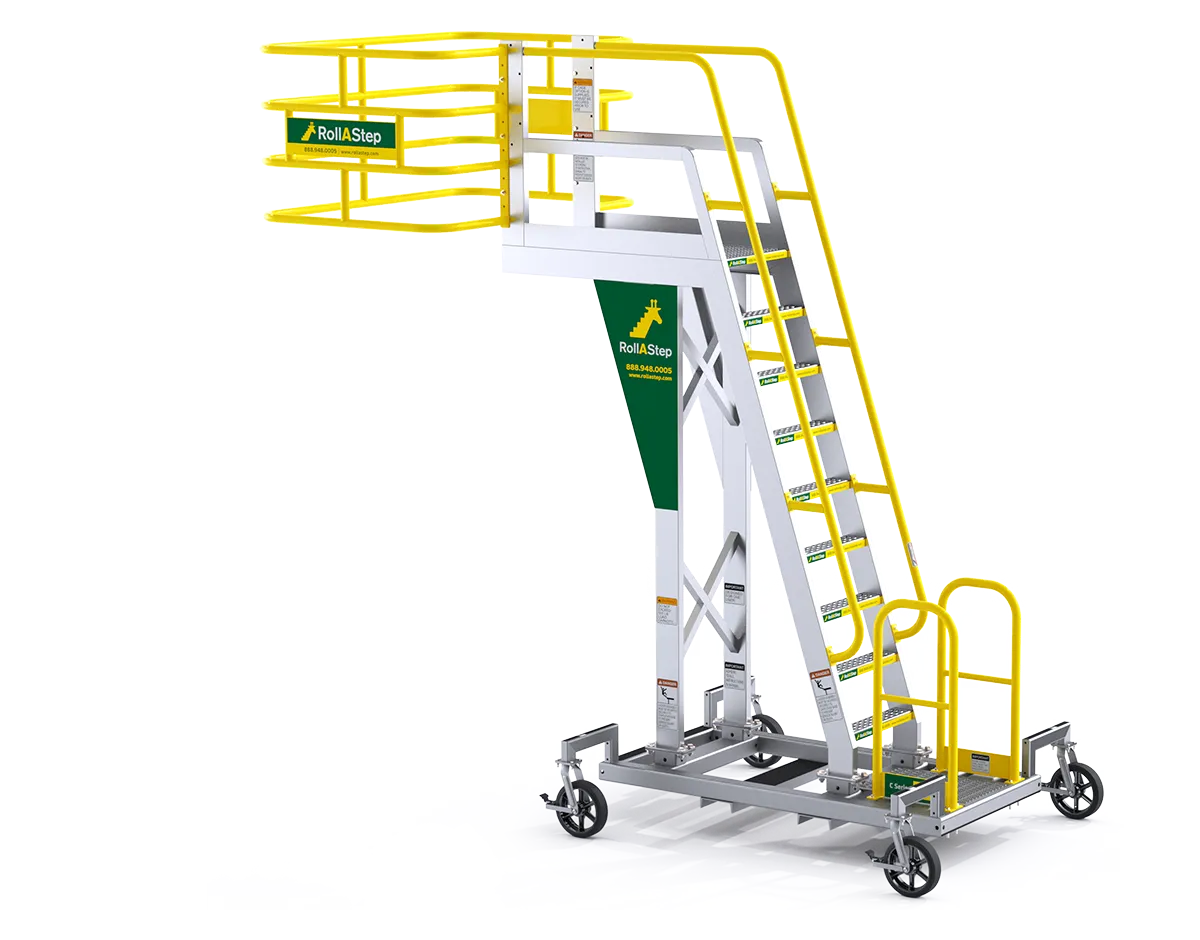Ladders are made of three materials: fiberglass, aluminum, and wood. This post focuses on the differences between fiberglass and aluminum ladders.
Aluminum ladders are preferred because they are lightweight and cost-effective. Fiberglass is non-conductive and best for electrical work.
Here’s an overview comparing aluminum and fiberglass ladders
| Aluminum Ladders | Fiberglass Ladders | |
|---|---|---|
| Weight/Portability | ✔ Lightweight | ✘ Heavier |
| Strength | ✔ While fiberglass is stronger, all aluminum ladders are sufficiently strong when used correctly. | ✔ Generally stronger and sturdier than aluminum |
| Durability | ✔ Will not rust or corrode, though natural oxidation may occur | ✔ Highly durable ✘ Can deteriorate with prolonged exposure to UV sunlight |
| Sustainability | ✔ Can be recycled and likely made from recycled materials | ✘ No recycling options |
| Cost | ✔ Less expensive | ✘ More expensive |
| Safety | ✔ Shows visible signs of wear or damage, which can be crucial for safety ✘ Conductive when doing electrical work | ✔ Non-conductive, Ideal for electrical work ✘ Impact damage is not always visible |
Aluminum Ladders
Pros
- Lightweight: Easier to transport and handle, making them suitable for various applications where mobility is essential.
- Cost-effective: Generally cheaper than fiberglass ladders, offering good value for general use.
- Durability: Aluminum is resistant to rust and can withstand various environmental conditions without corroding.
- Visible Damage: Shows impact damage clearly, allowing for easy identification of potential safety hazards.
- Recyclable: The ladder is likely made of recycled materials and can be recycled again at the end of its life, making it an environmentally friendly option.
- UV Resistant: Unlike fiberglass, UV radiation does not affect aluminum, maintaining its integrity over time.
Cons:
- Conductive: Not safe for electrical work as aluminum conducts electricity, posing a risk in environments with electrical hazards.
- Heat Conductive: While not a major concern, especially for homeowners, aluminum can become hot to the touch when exposed to direct sunlight or high temperatures.
Our Ladder Products

Rolling Ladder
RollaStep’s TR-Series lightweight frame and unique side rolling wheels is easy to position in tight spaces.

Ship Ladder
Our prefabricated aluminum ship ladders are ready to ship. The durable, modular design ranges from 1′ to 19′ and bolts onto our full line of access products.

Cantilever Ladder
RollaStep’s C Series gets operators on or above railcars, tank trucks and tall industrial machinery

Fixed Ladder
ErectaStep’s prefabricated fixed ladder design can meet your requirements without requiring custom fabrication.
Fiberglass Ladders
Pros:
- Electrical Safety: Non-conductive material makes fiberglass ladders safe for electrical work, protecting users from electrocution.
- Strength and Rigidity: Generally stronger and more rigid than aluminum, providing a stable platform, especially useful in step ladders.
- Durability in Sunlight: Although susceptible to UV degradation over time, fiberglass does not corrode or rust, making it suitable for outdoor use.
- Non-Visible Impact Resistance: While impacts may not be visibly apparent, fiberglass can handle certain types of impacts better than aluminum.
Cons:
- Heavier: More difficult to move and transport, especially in larger sizes, which can be a drawback for tasks requiring ladder mobility.
- More Expensive: Typically costlier than aluminum, which may be a significant factor for budget-conscious consumers.
- UV Degradation: Fiberglass can deteriorate when exposed to prolonged sunlight, potentially weakening the ladder in time.
- Hidden Damage: Impact damage may not always be visible, posing a risk as internal fibers could be compromised without outward signs.
If you’re working on a roof in a commercial or industrial environment, use handrail systems to be OSHA compliant.
Resources:
Choosing the right ladder americanladderinstitute.org
Comparing Aluminum and Steel – ErectaStep
For fall protection – fixed ladder fall arrest system
Not all work environments and tasks are the same. Consult a ladder manufacturer’s ratings, recommendations, and OSHA guidelines when considering your options.







